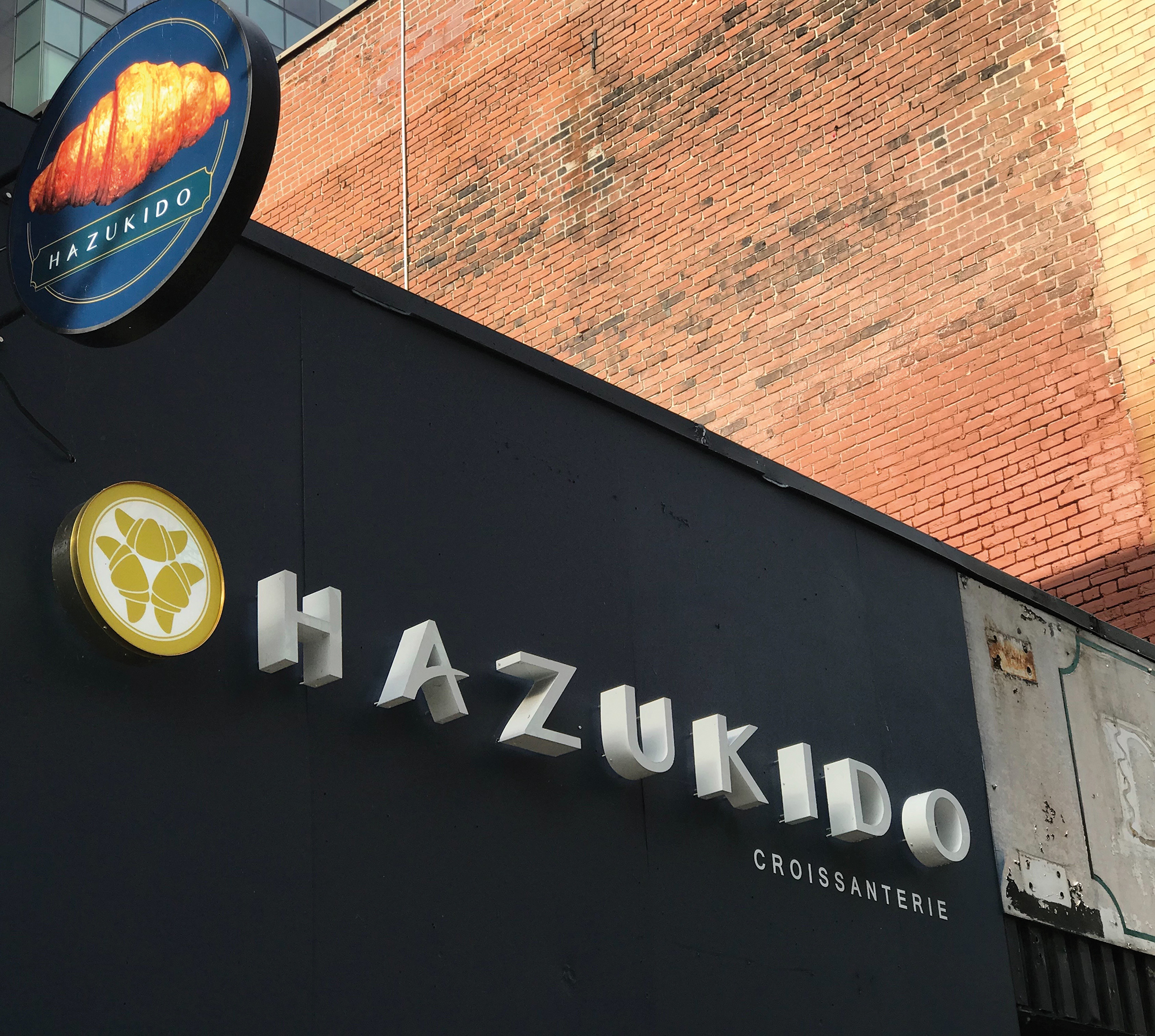A croissant review by a self-proclaimed expert
My TikTok “For You” page is filled with videos starting with, “If you’re from Montreal, you’ve GOT to try this spot…” Being a lover of all foods, I watch these very attentively, pulling my face as close to my phone screen as I can to absorb all the details, sometimes even bending in half so that my body wraps around my phone.
Despite my obsession with finding the newest trendy spots on the island, I have rarely taken the time to actually try these places out. I’m either too lazy, or can’t justify spending the money on something I could make myself. But one thing I cannot cook at home for the life of me is croissants.
You’ve seen the videos of pastry chefs laminating dough with obnoxious amounts of butter, the precise folding and rolling — it’s all too much! I will always buy fresh pastries, and I won’t ever feel bad about it!
Last week, I saw a TikTok about Hazukido croissants, a new spot right near St-Catherine St. and Guy. The Japanese/Taiwanese fusion pastry shop specializes in croissants made with Elle & Vire, a type of French butter that makes for especially great croissants. The pastry shop also adopted a method of proofing the dough that creates a complex “honeycomb” pattern in the pastry.
There have been long lines to get in since the opening; when I talked to the people behind me in line, they told me they had also found Hazukido on TikTok, and had made the journey downtown to try them. A limit of three croissants per customer was placed to ensure everyone would get some — but I got four!
Now let’s get into it.
Raspberry Panna Cotta
Okay, now this is a croissant I can get behind.
Here, the honeycomb structure and buttery-flakiness that is mentioned all throughout Hazukido’s advertising rang very true: the croissant was light, and had the perfect orgasm-inducing crunch sound and feel. The outside was crispy, golden and light, while the inside was soft and chewy.
The raspberry panna cotta filling is different from anything I’ve tried before — unlike your typical jam-stuffed pastry, this filling was creamy, almost like a tart raspberry custard. This may be too niche, but have you ever had the berry and yogurt smoothie from Pret A Manger? Well, it was reminiscent of those delicate flavours. The filling was evenly piped in, making for an enjoyable experience throughout.
I ate this one up so fast I surprised myself. 8.3/10.
Smoked chicken croissant
This is the first of the four that I tried. The croissant was sliced horizontally down the middle (creating two triangles) and then sandwiched on top of one another. The halves were coated in what seemed to be a béarnaise sauce — made with mayo, garlic and some parsley. On top of each layer was a slice of deli-cut smoked chicken and some melted cheese.
When I took my first bite, the savoury flavour and buttery texture hit first, followed by the slightly dense dough. The croissant had been weighed down, taking away from the flakiness of the layered pastry. I also ate this one cold.
I’m gonna be honest: this croissant was not my favorite. It tasted like a slightly better Starbucks breakfast sandwich, and at the tune of $5.25. From what I could tell, the cheese was a single Kraft slice and generic shredded cheese that had been melted and created a tough, chewy, leathery layer that was difficult to get through.
The flavour was there, but the execution on this was a 6/10 for me.
Salted Egg Yolk
This is one of the most coveted items on the menu — it’s been written about, praised, and is one of the reasons Hazukido made it to North America.
This salty-sweet creamy croissant is topped with black sesame, which brings a surprising depth of flavour to the classic pastry.
The croissant itself was delicious, and brought to my attention the superiority of sweet croissants — maybe that has to do with the weight of the fillings, but who knows. The salted egg yolk was creamy, granulated, and had very strong red bean paste vibes (I think that may have come mainly from the black sesame though).
All around, I enjoyed the experience created by this unorthodox flavour pairing. 7.5/10.
Golden Cheese
This final savoury treat brings our croissant tour to a close. This croissant was cut in two, sub-style, and stuffed with what looked like shredded gouda. On the top of your unconventional sub, there’s a melted piece of “golden” Australian cheese, topped with flaky salt.
I have no idea what Australian cheese is, but to me it tastes like a piece of snazzy Kraft Single was melted and then left at room temperature to harden and turn into the strangest rubber substance. The taste was good — once again giving me notes of a fast-food grilled cheese, but with more butter. The pastry itself was nice and soft, but altogether I found it a little too heavy, and I was left feeling a little nauseous.
In all fairness though, I had just eaten four croissants in a row… 7/10.
Try it out for yourself and see if you agree with my opinions by visiting Hazukido! The address is 1629 Saint-Catherine St. W in Montreal.
Photos by Lou Neveux-Pardijon and Juliette Palin
